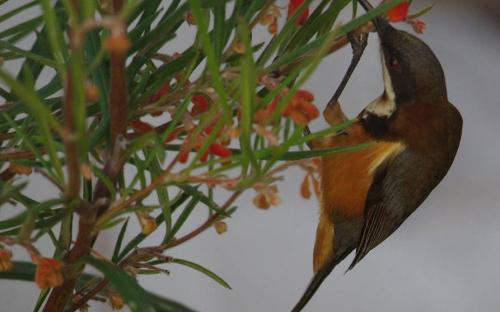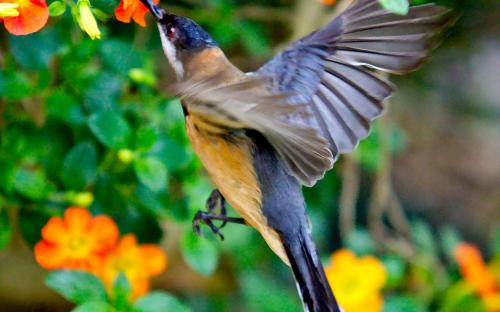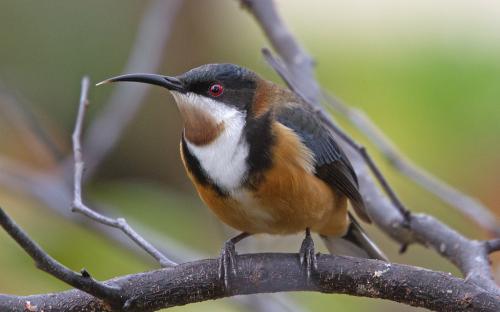Conservation status: least concern
This attractive small honeyeater (15cm long, 11g) has a distinctive long downcurved bill. It is also known as a Spine-billed honeyeater or an Awl-bird. Its call, a very rapid trill, often gives away its presence as it flits around hidden in vegetation.
In Bayside, it is a frequent visitor to gardens that have sufficient vegetation for cover and food. It feeds primarily on the nectar of plants such as gums, mistletoe, heath, correa, banksias and grevilleas, but has been known to feed from some introduced plants such as fuschias. It's a pollinator of many native plant species.
Unlike most Australian honeyeaters, the Eastern Spinebill can hover while feeding. However it usually chooses to feed while perched.
Adult Eastern Spinebills supplement their diet with insects just before and while breeding, or when nectar availability is reduced. In contrast, the young mainly eat insects and other invertebrates.
When nectar is plentiful, these birds will spend more time feeding, storing the excess nectar as fat. When nectar is scarce, they can drop their daytime metabolic rate to night time levels to help their fat reserves last longer.
They are most active during the day, particularly the morning, because nectar production in plants tends to peak at dawn. Also, more insects are active at that time of day
The Eastern Spinebill nests between August and December, building a cup-shaped nest of grass and bark, lined with feathers. The nest is normally found in the fork of a tree or shrub 1-5m from the ground. The female may lay 1-4 eggs, but 2 is common. She incubates the eggs for 13-16 days. Both parents feed the chicks, which fledge after 14 days.
When breeding, the pair becomes territorial, but outside the breeding season they wander in search of food.
Spinebills have been known to live for more than 13 years. The males and females can be distinguished by the colour of their crown: males are black, females grey
If you want to attract some to your garden, plant dense (for protection and shelter) patches with local, tube-flowered natives such as Common Correa Correa reflexa, and Common Heath Epacris impressa. Avoid hybrid native plants, particularly ones with large flowers that flower most of the year. These attract larger aggressive birds such as Noisy Miners, who will drive the Spinebills away






